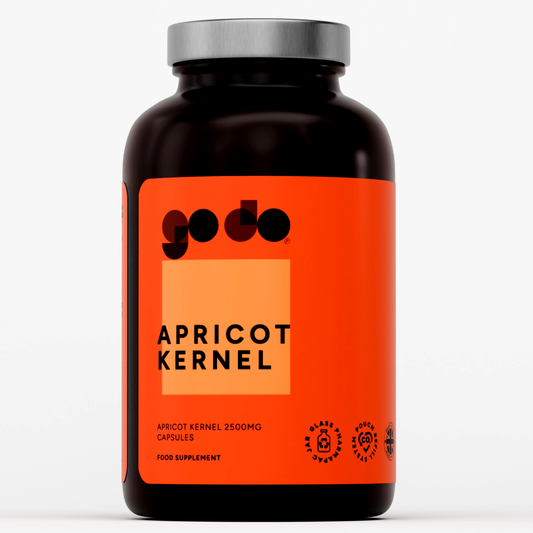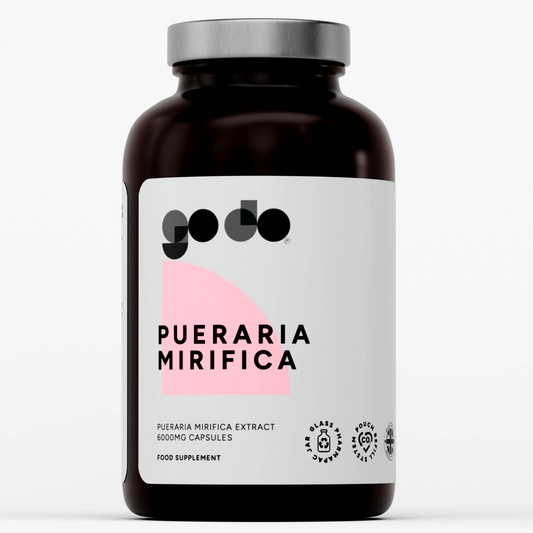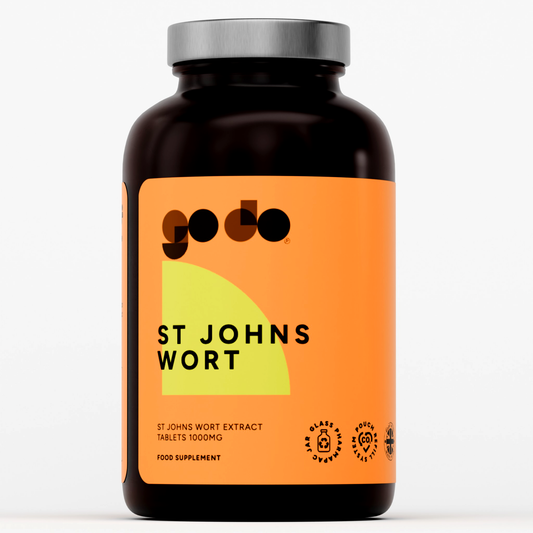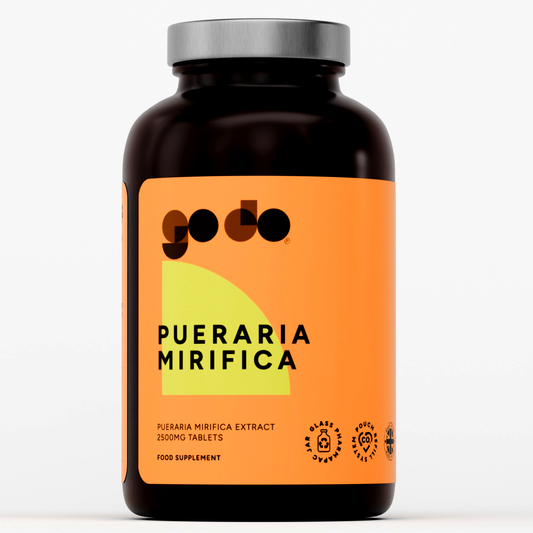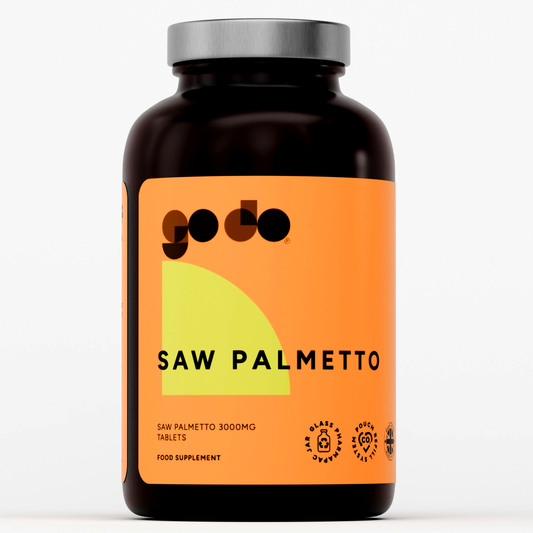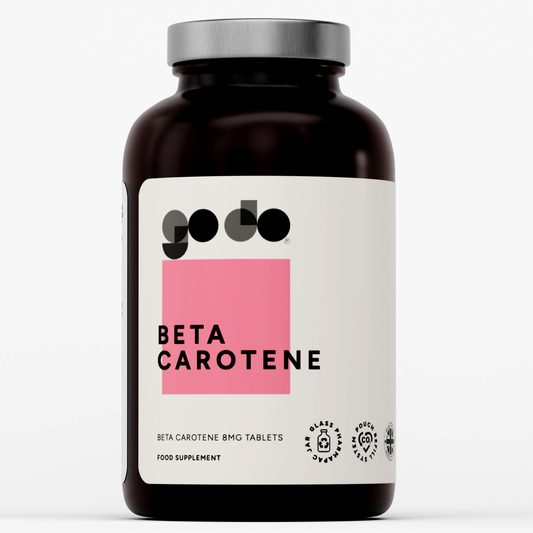The Best 5g Creatine Tablets: Boost Your Performance Effectively
Introduction to Creatine Supplementation
Creatine supplementation has become one of the most popular and scientifically validated methods for enhancing physical performance, particularly during successive bursts of short-term, high-intensity exercise such as sprinting, weightlifting, jumping, and other explosive movements. Creatine is recognized as one of the most researched supplements, with extensive scientific studies supporting its safety and efficacy for athletes and fitness enthusiasts. As one of the most extensively researched sports supplements available today, creatine has demonstrated consistent benefits for boosting energy production, improving muscular endurance, supporting strength gains, and enhancing overall workout performance across various training modalities. Creatine increases physical performance by enhancing power, strength, and short-term high-intensity exercise capacity, making it especially effective for athletes seeking performance gains. Creatine monohydrate stands out as the gold standard and most studied form of creatine supplementation, with decades of research supporting its effectiveness for muscle growth, energy production, and performance enhancement during resistance training and high-intensity workouts. It is particularly effective at improving performance in successive bursts of short-term, high-intensity activity, such as repeated sprints or sets of heavy lifts. The mechanism behind creatine’s effectiveness involves increasing your muscles’ phosphocreatine stores, which are used to produce ATP (adenosine triphosphate)—the primary energy currency your cells use during intense exercise—thereby allowing you to train harder, longer, and with greater intensity. When considering creatine supplementation, especially in tablet form providing 5 grams per serving, it’s important to understand how it works, evaluate product quality, consider your individual needs and goals, and consult with a healthcare professional if you have any pre-existing medical conditions or concerns about potential interactions with medications or other supplements.

Understanding Creatine and How It Works
Creatine is a naturally occurring compound found primarily in muscle tissue and obtained through dietary sources like red meat and fish, as well as synthesized in small amounts by the liver, kidneys, and pancreas from the amino acids glycine, arginine, and methionine. In muscle cells, creatine combines with phosphate to form phosphocreatine (also called creatine phosphate), which serves as a rapidly available energy reserve that can quickly regenerate ATP during high-intensity exercise when energy demands exceed what can be supplied by aerobic metabolism alone. During intense exercise lasting approximately 10 seconds to 2 minutes—such as a heavy set of squats, a sprint, or a vertical jump—your muscles deplete their ATP stores rapidly, and phosphocreatine donates its phosphate group to ADP (adenosine diphosphate) to quickly regenerate ATP without requiring oxygen. By supplementing with creatine and increasing your muscle creatine stores by 10-40% above normal levels (depending on your baseline levels, which are influenced by diet and genetics), you enhance your capacity to perform high-intensity work, delay fatigue, and potentially complete more repetitions or maintain higher power output during training sessions. This also leads to improvements in performance in successive bursts of high-intensity efforts, allowing you to recover faster between sets and sustain performance across multiple bouts of intense activity. This enhanced training capacity over time leads to greater training adaptations, including increased muscle mass, improved strength, enhanced power output, and better overall athletic performance in activities requiring repeated bursts of intense effort.
Types of Creatine
When you're exploring the wonderful world of creatine supplementation, dear friend, you'll discover several nurturing forms, each offering its own unique gifts for your wellness journey. Creatine monohydrate is truly the most beloved and well-studied option, making it a gentle yet powerful foundation for anyone seeking natural support for muscle vitality, strength, and overall performance. This beautiful form serves as the heart of most creatine supplements because of its remarkable effectiveness, safety profile, and accessibility for all. Other caring options, like creatine HCL (hydrochloride), are thoughtfully crafted for enhanced absorption and may offer comfort for those sensitive to digestive concerns, though the research is still blossoming compared to our trusted monohydrate. Creatine gummies have also found their way into many hearts for their delightful convenience and taste, providing a loving alternative for those who prefer not to swallow tablets or blend powders into their daily routine. While these other forms may speak to your personal preferences or special dietary needs, creatine monohydrate tablets continue to be the most nurturing choice for supporting your individual fitness aspirations. When choosing your creatine companion, I encourage you to gently consider your personal wellness goals, any dietary sensitivities you may have, and the available wisdom supporting each type, so you can truly honor your body's needs and make the most of this beautiful supplementation journey.

Benefits of Creatine Supplementation
Creatine supplementation offers numerous well-documented benefits that extend beyond simply enhancing athletic performance, making it valuable for a wide range of individuals from competitive athletes to recreational gym-goers and even older adults seeking to maintain muscle mass and function. The most prominent benefit is increased lean body mass and muscle growth, which occurs both through enhanced training capacity allowing for greater training volume and intensity, and through cellular mechanisms including increased water retention in muscle cells (cell volumization), enhanced protein synthesis, reduced protein breakdown, and satellite cell activation. Enhanced muscle strength and power represent another key benefit, with research consistently showing improvements of 5-15% in maximal strength and power output across various exercises and populations, particularly when creatine supplementation is combined with appropriate resistance training. Improved exercise performance in high-intensity, short-duration activities is perhaps the most immediate benefit, with studies demonstrating enhanced performance in sprinting, jumping, repeated sprint ability, weightlifting, and sports requiring intermittent bursts of intense effort like basketball, soccer, and hockey. Creatine is especially effective at increasing energy availability in muscles during short bursts of activity, supporting quick, explosive movements and improving overall performance in these scenarios, particularly in performance in successive bursts . Recovery benefits include reduced muscle damage markers, decreased inflammation following intense exercise, faster restoration of muscle creatine and glycogen stores between training sessions, and potentially reduced muscle soreness, allowing for more frequent or intense training sessions. Emerging research also suggests potential cognitive benefits including improved memory, mental processing speed, and reduced mental fatigue, particularly during sleep deprivation or mentally demanding tasks, which are among the benefits of creatine though more research is needed to fully establish these effects.
Why Choose 5g Creatine Tablets
Five-gram creatine tablets offer a convenient, precise, and portable alternative to traditional creatine powder, making them an excellent choice for individuals who value convenience, dislike the taste or texture of powder mixed in beverages, travel frequently, or prefer pre-measured doses that eliminate the need for scooping and measuring. Monohydrate tablets are a convenient and effective option for athletes and active individuals seeking to improve performance, strength, and power, with the added benefit of high purity and ease of use compared to powders.
The 5-gram dosage is particularly significant because it represents the standard maintenance dose recommended for most individuals once they’ve completed a loading phase (or if they choose to skip loading entirely and build creatine stores gradually), making these tablets ideally suited for daily supplementation without requiring multiple pills. Creatine monohydrate tablets are a preferred choice for those seeking purity and ease of use, as they offer a straightforward way to meet daily creatine needs.
Tablets eliminate the mess associated with powder spillage, don’t require mixing with liquids (though taking them with water or another beverage is still recommended for proper hydration and absorption), and maintain their potency and quality without the clumping or degradation issues that can sometimes affect powders exposed to moisture or humidity. The pre-measured 5-gram dose removes any guesswork or inconsistency in dosing, ensuring you consume the optimal amount daily without under or over-dosing, which is particularly important for individuals who are meticulous about their supplement regimen or concerned about precise nutrient timing. For athletes and fitness enthusiasts who are often on the go, traveling for competition, or training at different locations, tablets offer unmatched portability compared to bulky powder containers, fitting easily into gym bags, backpacks, or even pockets without the risk of spills or the need for additional mixing equipment. However, not everyone prefers tablets—some may opt for other forms like powder, gummies, or capsules based on taste, convenience, or cost considerations.

Creatine Tablets vs. Powder
When you're thoughtfully considering the choice between creatine tablets and creatine powder, I believe it truly comes down to honoring your unique lifestyle and personal wellness journey. Creatine tablets offer a beautifully simple approach to your supplementation routine—you can simply take your daily dose with water, without any need for mixing or measuring, which brings such peace of mind. This makes them a nurturing choice for those with busy, dedicated lives, frequent travelers, or anyone who finds comfort in a gentle, straightforward path to supporting their health. On the other hand, creatine powder often provides a more budget-conscious option while empowering you with the flexibility to customize your dose according to your body's individual needs. It blends seamlessly into your nourishing shakes, smoothies, or other wellness supplements, making it a wonderfully versatile choice for those who take joy in creating their own personalized supplement blends that truly serve their unique constitution. Both forms deliver the same profound benefits that creatine offers to support your body's natural processes, so your decision should be deeply rooted in what feels most aligned with your daily rhythms and wellness goals. If you find yourself drawn to simplicity and the convenience of portability, creatine tablets can be a deeply supportive choice for your journey. If you're someone who values flexibility and mindful budgeting while maintaining control over your supplementation, creatine powder may be the more nurturing path forward. Ultimately, both are effective, gentle supplements that can lovingly support you in reaching your performance and fitness aspirations and increase physical performance through informed, empowered choices.
Key Features to Look for in 5g Creatine Tablets
When selecting the best 5g creatine tablets, several critical features should guide your decision to ensure you’re getting a high-quality, effective, and safe product that delivers optimal results. First and foremost, look for tablets containing pure creatine monohydrate as the primary ingredient, as this is the form with the most extensive research supporting its safety and effectiveness, and avoid products with unnecessary fillers, binders beyond what’s required for tablet formation, artificial colors, or proprietary blends that obscure actual creatine content. Third-party testing and certification from organizations like NSF Certified for Sport, Informed-Choice, or USP verification provides assurance that the product contains what it claims, is free from banned substances and contaminants, and meets quality standards—this is particularly important for competitive athletes subject to drug testing. The tablet’s formulation should facilitate easy swallowing and effective absorption, with appropriate binders and coatings that allow the tablet to break down efficiently in your digestive system while remaining stable during storage and transport. In addition, anti-caking agents are often included in the formulation to prevent clumping and ensure the powder's stability and flowability during manufacturing and usage. Bulking agents, such as microcrystalline cellulose, are commonly used as excipients in tablet manufacturing; microcrystalline cellulose serves both as a bulking agent and an anti-caking agent, improving powder flow and tablet stability. Manufacturing standards matter significantly—look for products made in GMP (Good Manufacturing Practice) certified facilities, preferably in countries with strict regulatory oversight like the United States, Canada, or European Union nations, to ensure consistent quality, purity, and safety. Consider whether the tablets include any additional beneficial ingredients like electrolytes for hydration, carbohydrates to potentially enhance creatine uptake through insulin response (though this is optional and you can achieve the same effect by taking creatine with meals), or if they’re simply pure creatine monohydrate, which many users prefer for simplicity and to avoid unnecessary additives.
Micronized Creatine
Micronized creatine is a thoughtfully processed form of creatine powder where the particles have been gently refined to become much smaller than those found in standard creatine monohydrate. This beautifully fine texture allows the creatine to blend harmoniously with liquids, naturally reducing any tendency to clump while being wonderfully gentle on your digestive system. The enhanced mixability means your body can welcome and absorb this supplement more efficiently, potentially nurturing the effectiveness of your creatine routine in a way that honors your body's natural processes. Many thoughtfully crafted creatine monohydrate products embrace micronized creatine to ensure you receive the most nourishing experience and results possible. If you're seeking a creatine powder that offers superior solubility and gentle absorption while supporting your body's needs, choosing a supplement with micronized creatine monohydrate is a caring choice that can help you naturally maximize your performance and muscle development journey.

Top-Rated 5g Creatine Tablet Options
If you're looking to find the best creatine supplement or compare the best creatine supplements on the market, it's important to evaluate quality, purity, and value across different product types. This section will help you identify top options by considering these key factors.
While I can provide guidance on what makes excellent creatine tablets, I should note that specific product recommendations and rankings can change based on current market availability, updated formulations, and new research, so always check current reviews and verify product specifications before purchasing. High-quality 5g creatine tablets typically come from reputable sports nutrition brands with established track records of quality, transparent labeling, third-party testing, and positive user feedback across multiple platforms and review sites. Look for brands that specialize in sports supplements and have invested in quality manufacturing processes, clinical research, and rigorous testing protocols to ensure their products deliver consistent results and meet label claims. Some brands offer micronized creatine monohydrate in their tablets, which features smaller particle sizes that may improve mixability (though less relevant for tablets), dissolution in the digestive system, and potentially reduce any digestive discomfort some users experience with standard creatine monohydrate.
When comparing tablets to the best creatine capsules, both formats offer convenience and precise dosing, with capsules often praised for their ease of swallowing and portability, making them a practical and effective choice for many users.
Value considerations should balance cost per serving with quality indicators—while creatine is generally an affordable supplement, extremely cheap options may cut corners on quality, purity, or testing, whereas moderately priced options from established brands often provide the best balance of quality and value. Read verified customer reviews focusing on factors like tablet size and ease of swallowing, digestive tolerance, perceived effectiveness for strength and performance gains, product consistency across different batches, and customer service experiences, while remaining skeptical of reviews that seem overly positive or negative without substantive details.

Proper Dosage and Usage Guidelines
The standard approach to creatine supplementation involves two possible strategies: a loading phase followed by maintenance, or a more gradual approach without loading that achieves the same results over a slightly longer timeframe. The loading phase protocol involves consuming approximately 20 grams of creatine daily (typically split into four 5-gram doses taken throughout the day with meals or snacks) for 5-7 days, which rapidly saturates muscle creatine stores and allows you to experience the benefits of supplementation within the first week. Following the loading phase, you transition to a maintenance dose of 3-5 grams daily (making a single 5-gram tablet perfect for this purpose), which maintains elevated muscle creatine stores and sustains the performance benefits over time. The recommended dose for daily creatine supplementation is generally 3-5 grams, which is considered effective and safe for most individuals. If you are wondering how much creatine to take, most experts and guidelines suggest sticking to this standard 3-5g daily amount for ongoing use.
Alternatively, many users skip the loading phase entirely and simply take 3-5 grams daily from the start, which gradually increases muscle creatine stores over 3-4 weeks until they reach the same saturation levels achieved through loading, without the higher initial doses or potential for mild digestive discomfort some people experience during loading. For 5-gram tablets specifically, most users will take one tablet daily during the maintenance phase, or four tablets spread throughout the day during a loading phase if they choose to pursue that approach, though some individuals may find it more convenient to load with powder and then transition to tablets for maintenance. Timing of creatine supplementation is less critical than consistency—while some research suggests potential minor benefits to taking creatine post-workout when muscles may be more receptive to nutrient uptake, the most important factor is taking your daily dose consistently, whether that’s with breakfast, post-workout, with dinner, or at any other regular time that helps you maintain the habit.
How Long Does Creatine Take to Work
One of the most heartfelt questions I hear from those exploring creatine supplementation is about when they might begin to feel its gentle embrace. Each person's journey unfolds beautifully in its own time, influenced by the unique tapestry of their nourishment choices, how lovingly they approach their movement practice, and their body's individual wisdom. Most dear souls start to experience creatine's nurturing gifts—like a warm sense of growing strength, renewed vitality flowing through their workouts, and that wonderful feeling of muscle fullness—within 3 to 4 weeks of embracing this supplement with daily devotion. Some precious individuals may feel these beautiful shifts blossoming in as little as 7 to 10 days, particularly when they honor their body with a thoughtful loading phase. Please remember, sweet friend, that creatine isn't a magic remedy but rather a caring companion that flourishes alongside consistent use and a mindful movement practice. Stay gentle with yourself, nurture your body with wholesome nutrition, and trust in your body's innate ability to adapt and heal. With tender patience and loving dedication, you'll experience the full spectrum of blessings that creatine supplementation can lovingly offer your wellness journey.
Maximizing Absorption and Effectiveness
While creatine monohydrate is highly bioavailable and effective on its own, several strategies can help optimize its absorption, minimize potential side effects, and enhance its overall effectiveness for performance and muscle growth. Taking creatine with carbohydrates (approximately 50-100 grams) or a combination of carbohydrates and protein stimulates insulin release, which may enhance creatine transport into muscle cells, though research suggests this is a minor optimization rather than a critical factor, and taking creatine with regular meals provides similar benefits. Adequate hydration is crucial when supplementing with creatine because it draws water into muscle cells (contributing to the cell volumization effect and potentially to muscle growth signaling), so aim to consume at least 8-10 glasses of water daily, and increase this amount if you’re training intensely, in hot environments, or experiencing any signs of dehydration.
Unflavored creatine monohydrate powder is especially convenient due to its neutral taste, which means it dissolves easily, has no aftertaste, and can be mixed with various beverages without altering their flavor. This makes it easy to incorporate silicon dioxide into your daily routine.
Consistency in supplementation is more important than any specific timing protocol—taking your 5-gram dose every single day, including rest days, maintains elevated muscle creatine stores and ensures you experience the full benefits of supplementation without the stores depleting between training sessions. Combining creatine with an effective resistance training program is essential because creatine doesn’t build muscle or increase strength on its own—rather, it enhances your capacity to train harder and more effectively, and it’s this enhanced training stimulus that drives adaptations over time. Creatine powder can also be mixed with other powders, such as whey protein or pre-workout supplements, for added convenience and versatility in your supplement regimen. Avoid taking creatine with large amounts of caffeine simultaneously, as some early research suggested potential interactions that might reduce creatine’s effectiveness, though more recent studies have questioned this concern—nonetheless, spacing them out (taking creatine with one meal and caffeine at a different time) may be a reasonable precaution if you’re concerned.
Creatine and Electrolytes
From my years of experience supporting people on their wellness journeys, I've found that thoughtfully combining creatine with electrolytes creates a beautiful synergy that can truly nurture your body during those demanding physical activities. Nature's essential minerals like sodium, potassium, and magnesium work so harmoniously together - they're like gentle guardians maintaining your body's fluid balance, supporting those precious nerve pathways, and tenderly preventing those uncomfortable muscle cramps that can derail your progress. When you lovingly pair these with creatine supplements, which naturally enhance your physical vitality and energy reserves, you're creating a wholesome foundation for your athletic endeavors and recovery process. I often remind people that some creatine formulations include nurturing ingredients such as magnesium stearate or silicon dioxide, which not only support the supplement's integrity but also contribute to your body's mineral needs in their own gentle way. For an even more holistic approach, I encourage you to consider taking your creatine alongside nourishing carbohydrate drinks or other mineral-rich beverages - this creates such a beautiful support system for hydration and helps your body reach its natural potential. As I always share with those I care for, if you have unique dietary needs or any health considerations, please reach out to a trusted healthcare professional who can guide you on this personal journey, ensuring that whatever path you choose aligns perfectly with your individual wellness goals and honors your body's wisdom.
Potential Side Effects and Safety Considerations
Creatine monohydrate is one of the most extensively studied sports supplements with an excellent safety profile when used appropriately, though like any supplement, it can cause side effects in some individuals, particularly when taken in excessive doses or without proper hydration. The most common side effect during the loading phase is gastrointestinal discomfort including stomach cramping, nausea, or diarrhea, which typically results from taking too much creatine at once on an empty stomach—this can be minimized by spreading doses throughout the day, taking creatine with meals, or skipping the loading phase entirely. Weight gain of 2-6 pounds during the first week of supplementation is normal and expected, resulting primarily from increased water retention in muscle cells rather than fat gain, and this should not be confused with unwanted weight gain—for athletes in weight-class sports, this should be factored into competition timing and weight management strategies. Muscle cramping and strains were historically attributed to creatine supplementation, but controlled research has consistently failed to confirm these concerns, with some studies actually suggesting creatine may reduce cramping risk by improving hydration status and muscle function. Kidney and liver concerns are often raised about creatine supplementation, but extensive research has demonstrated that creatine is safe for healthy individuals when taken at recommended doses, though individuals with pre-existing kidney or liver disease should consult their healthcare provider before supplementing, and regular health monitoring may be prudent for anyone taking high doses long-term. Hair loss concerns based on a single study showing increased DHT (dihydrotestosterone) levels have not been confirmed in subsequent research, and no evidence directly links creatine supplementation to hair loss, though individuals concerned about this possibility should weigh the available evidence and their personal risk factors.
Creatine for Different Goals and Populations
Creatine supplementation can benefit diverse populations with varying goals, though the specific benefits and optimal protocols may differ based on individual circumstances, training status, and objectives. Strength athletes and powerlifters benefit tremendously from creatine's ability to enhance maximal strength, power output, and training capacity, allowing them to handle heavier loads, complete more total training volume, and potentially break through plateaus more effectively. Bodybuilders and physique competitors appreciate creatine for its muscle-building properties, the cell volumization effect that can improve muscle fullness and size, and the enhanced training capacity that allows for more productive hypertrophy-focused workouts, though they may cycle off creatine before competitions to reduce water retention if pursuing extreme conditioning. Endurance athletes engaging primarily in aerobic activities lasting longer than several minutes see less dramatic benefits from creatine than strength and power athletes, though it may still help with high-intensity intervals, sprint finishes, repeated accelerations in sports like cycling or running, and potentially with training adaptations over time. Team sport athletes in sports like soccer, basketball, football, hockey, and rugby that involve repeated sprints, jumps, and explosive movements with brief recovery periods are ideal candidates for creatine supplementation, as it enhances exactly the type of repeated high-intensity performance these sports demand. Older adults (typically 50+ years) represent an emerging population that may benefit significantly from creatine supplementation combined with resistance training to combat age-related muscle loss (sarcopenia), maintain functional independence, support bone health, and potentially provide cognitive benefits, with research generally supporting safety and effectiveness in this population when properly supervised.

Combining Creatine with Other Supplements
Creatine can be safely and effectively combined with various other supplements to create a comprehensive supplementation strategy that addresses multiple aspects of performance, recovery, and health, though it’s important to understand which combinations offer genuine synergistic benefits versus those that are simply convenient. Some creatine supplements also include vitamin C, a beneficial nutrient that supports recovery, immune function, and provides antioxidant properties. Protein supplementation (whey, casein, or plant-based proteins) combines excellently with creatine, as protein supports muscle protein synthesis and recovery while creatine enhances training capacity and energy production—taking them together post-workout with carbohydrates may optimize recovery and muscle building, though timing is less critical than overall daily intake. Beta-alanine is another well-researched supplement that pairs well with creatine, as it works through a different mechanism (buffering hydrogen ions to delay muscular fatigue during moderate to high-intensity exercise lasting 1-4 minutes) and research shows combining these supplements may produce additive or even synergistic benefits for certain performance measures. Branched-chain amino acids (BCAAs) can be combined with creatine, though their benefits may be redundant if you’re already consuming adequate protein from whole foods and protein supplements, and research on BCAAs alone is less compelling than for creatine or protein—they won’t harm when combined but may not provide additional benefits beyond adequate protein intake. Pre-workout supplements often contain creatine along with ingredients like caffeine, citrulline, beta-alanine, and others designed to enhance energy, focus, and performance—while these can be convenient and effective, ensure you’re not double-dosing creatine if you’re also taking standalone 5-gram tablets, and be mindful of total stimulant intake if the pre-workout contains caffeine. Post-workout carbohydrate supplements or simple carbohydrate sources like fruit juice or dextrose can be combined with creatine to potentially enhance uptake through insulin-mediated transport mechanisms, though research suggests this provides only modest benefits and isn’t necessary if you’re taking creatine consistently with regular meals.
Common Myths and Misconceptions About Creatine
Despite creatine's extensive research support and excellent safety record, numerous myths and misconceptions persist that may discourage people from using this beneficial supplement or lead to improper usage patterns. The myth that creatine is a steroid or similar to anabolic steroids is completely false—creatine is a naturally occurring compound found in food and synthesized by your body, works through entirely different mechanisms than hormonal steroids, and is legal in all sports and competition levels. The belief that creatine causes dangerous dehydration or electrolyte imbalances has been thoroughly debunked by research, with studies actually suggesting that creatine may improve hydration status and thermoregulation during exercise in hot environments, though maintaining adequate fluid intake remains important as with any training program. The misconception that you must cycle creatine (taking breaks from supplementation) to maintain its effectiveness or avoid building tolerance is not supported by research—muscle creatine stores remain elevated as long as you continue supplementing, and no evidence suggests that continuous use reduces effectiveness or causes harm in healthy individuals. The idea that creatine only works for men or that it will cause women to look bulky or masculine is entirely incorrect—creatine works through the same physiological mechanisms in all individuals regardless of gender, and women will not become bulky from creatine supplementation alone, as this requires specific hormonal environments, training protocols, and often years of dedicated effort. The myth that non-responders to creatine supplementation make up a large percentage of users is somewhat exaggerated—while individual responses vary based on baseline muscle creatine levels (influenced by dietary meat intake and genetics), most people experience benefits, though those with naturally higher baseline levels may see smaller increases and potentially less dramatic performance improvements.
 Progress and Results
Progress and Results
Effectively tracking your progress while using creatine supplementation helps you assess whether the supplement is working as expected, make informed decisions about continuing supplementation, and optimize your overall training and nutrition program for best results. Performance metrics represent the most direct indicators of creatine's effectiveness, so track key indicators like maximum weight lifted for major exercises (bench press, squat, deadlift), total repetitions completed at a given weight or to failure, sprint times or power output, vertical jump height, or sport-specific performance measures relevant to your activities. Body composition changes including increases in lean muscle mass and potentially body weight (especially during the first 1-2 weeks from water retention) can be monitored through regular weigh-ins, body composition assessments (DEXA scans, bioelectrical impedance, or skinfold measurements), progress photos, and how your clothes fit, keeping in mind that initial rapid weight gain is primarily water while longer-term gains reflect actual muscle growth from enhanced training. Training capacity indicators like total training volume (sets × reps × weight), ability to recover between sets and between training sessions, perceived exertion during high-intensity efforts, and your capacity to maintain performance across multiple sets or training sessions can all improve with creatine supplementation and deserve monitoring. Subjective assessments including how you feel during workouts, energy levels, muscle fullness, recovery quality, and overall satisfaction with training progress provide valuable qualitative data that complements objective measurements and helps you evaluate whether creatine supplementation aligns with your goals and expectations. Keep a training log or use fitness tracking apps to record these various metrics over time, allowing you to identify trends, correlate changes with your supplementation protocol, and make data-driven decisions about continuing, adjusting, or discontinuing creatine use based on your individual response and goals.
Conclusion and Final Recommendations
Creatine supplementation, particularly through convenient 5-gram tablets, represents one of the most effective, well-researched, safe, and affordable supplements available for individuals seeking to enhance their athletic performance, increase muscle mass and strength, and optimize their training results across various sports and fitness activities. When selecting the best 5g creatine tablets for your needs, prioritize products containing pure creatine monohydrate from reputable manufacturers that employ third-party testing, transparent labeling, and quality manufacturing practices to ensure you're getting exactly what you pay for without contaminants or underdosing. Follow evidence-based dosing protocols by either implementing a 5-7 day loading phase with 20 grams daily split into four doses followed by 3-5 grams daily for maintenance, or skipping loading and consistently taking 3-5 grams daily (making one 5-gram tablet perfect) until muscle stores gradually saturate over 3-4 weeks. Combine creatine supplementation with an appropriate training program that includes resistance training or high-intensity exercise to maximize its benefits, maintain adequate hydration throughout the day, take your daily dose consistently even on rest days, and be patient as the full benefits develop over several weeks of consistent use and training. Remember that while creatine is highly effective and safe for most healthy individuals, it's not magic—it enhances your capacity to train harder and more effectively, and it's this enhanced training stimulus combined with proper nutrition and recovery that drives results, making creatine one valuable component of a comprehensive approach to fitness and performance rather than a standalone solution that works independently of your efforts.




